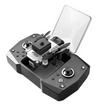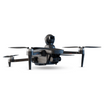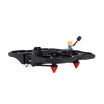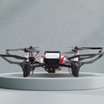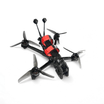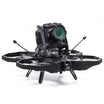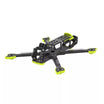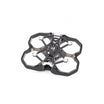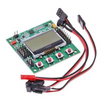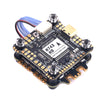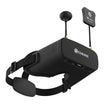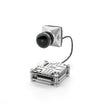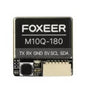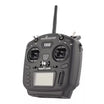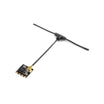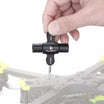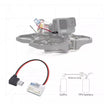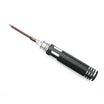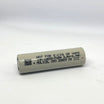In defence operations, drones often face some of the most challenging environments on the Earth. For the Indian Army, defence drones are vital for surveillance, reconnaissance, and mission support.
But while launching and flying a drone gets most of the attention, landing and recovery are equally mission-critical.
A failed landing can destroy valuable technology, damage sensitive payloads, and risk losing classified data. Recovery in hostile environments adds even more complexity, where operators might have to deal with enemy fire, unstable terrain, or GPS-denied zones.
At insidefpv, we design military-grade drones for the toughest scenarios, but even the most advanced technology relies on trained operators who follow proven landing and recovery protocols.
This guide covers the techniques and best practices every Indian Army drone operator should master to ensure safe landing and retrieval in hostile conditions.
Why Landing and Recovery Are Critical in Defence Missions
In civilian drone flying, a rough landing might mean just replacing a few parts. In military operations, however, the stakes are far higher:
-
Loss of intelligence if onboard data storage is damaged
-
Risk of drones being captured and reverse-engineered by hostile forces
-
Operational delays if the drone fleet is reduced
-
Safety hazards for retrieval teams under enemy observation
A disciplined approach to landing and recovery ensures mission integrity and asset protection.
Understanding the Challenges of Hostile Environment Landings
Before we dive into techniques, it’s essential to recognise what makes hostile environments different:
-
Enemy Threats: Landing zones may be within enemy surveillance or weapon range.
-
Unstable Terrain: Loose soil, snow, sand, or rocky ground can cause tipping or impact damage.
-
Signal Interference: Jamming or GPS spoofing can affect automated landing functions.
-
Weather Extremes: Strong winds, low visibility, and temperature extremes can compromise stability.
Also read: How insideFPV fits in India’s leading drone defence future
3 Essential Pre-Landing Preparations That You Should Know
Safe landings begin well before descent.
1. Select a Landing Zone in Advance
Always identify primary and secondary landing sites before take-off. For the Indian Army, this means choosing areas with:
-
Clear visibility for the ground crew
-
Minimal obstacles like trees, cables, or uneven ground
-
Tactical concealment from enemy observation
2. Monitor Battery and Power Levels
Begin landing procedures before battery levels reach critical. Defence drones often carry heavier payloads, meaning power drains faster than expected.
3. Reduce Payload Weight If Possible
If the drone is carrying expendable equipment or has completed part of its mission, consider offloading non-essential payloads mid-mission to ensure better stability during landing.
Landing Techniques for Defence Drones
These are some of the landing techniques that you should keep in mind:
1. Controlled Descent with Manual Oversight
While many drones feature automated landing systems, hostile conditions demand manual oversight. Maintain steady throttle and gradual altitude loss to avoid turbulence effects.
2. Steep Approach in High-Threat Zones
In areas under enemy observation, reduce exposure time by approaching at a steeper descent angle. This limits the drone’s visibility to potential shooters.
3. Crosswind Compensation
Strong side winds can push drones off their intended path. Operators must adjust heading into the wind slightly to ensure a straight approach.
4. Obstacle Avoidance During Final Approach
Use onboard sensors and visual feeds to detect unexpected obstacles. In combat zones, wires, camouflaged nets, or debris may be intentionally placed to damage drones.
Also read: Real time drone surveillance: What makes it mission critical
Recovery Techniques in Hostile Environments
1. Rapid Retrieval Protocols
Once landed, the drone should be recovered immediately. Ground crews must be trained to:
-
Approach from a direction that keeps the drone between them and any enemy line of sight
-
Secure the drone in protective cases to prevent sensor or gimbal damage
-
Remove or encrypt onboard data before moving out
2. Remote Recovery in Dangerous Zones
If sending a team is too risky, use secondary smaller drones or unmanned ground vehicles (UGVs) to retrieve the primary drone.
3. Concealment After Landing
If immediate recovery isn’t possible, camouflage the drone using environment-matching covers to prevent enemy detection.
Specialised Techniques for Different Terrains
Mountainous Terrain
-
Use larger landing pads to compensate for uneven surfaces.
-
Avoid downdrafts near cliffs or ridges by landing slightly away from steep drops.
Desert Operations
-
Watch for dust clouds that can blind sensors and descend slowly at the final stage to avoid “brownout.”
-
Clean motors and sensors immediately after landing to prevent sand damage.
Snow and Ice
-
Prevent icing on propellers and sensors by pre-heating components before flight.
-
Avoid landing on ice sheets that may crack under pressure.
Maritime or Coastal Zones
-
Ensure corrosion-protection measures are active before deployment.
-
Land on stable floating platforms if ground access is impossible.
Countering Enemy Interference During Landing
Hostile forces may attempt to disrupt drone landings through:
-
Signal Jamming: Switch to backup control frequencies or manual visual navigation.
-
GPS Spoofing: Rely on inertial navigation systems when GPS data appears inconsistent.
-
Kinetic Threats: Land in zones shielded by natural cover, like hills or dense foliage, to reduce line-of-sight targeting.
Insidefpv defence drones come with encrypted communications and anti-jamming technology to help operators maintain control even under attack.
What Are Post-Recovery Protocols?
Once the drone is secured, the work isn’t over.
-
Inspect for visible damage before re-deployment
-
Clean and service moving parts affected by terrain or weather
-
Download and back up all mission data securely
-
Recharge and test batteries for the next operation
Frequently Asked Questions
1. Why is landing more challenging in defence missions than in civilian operations?
Hostile environments may involve enemy threats, unstable terrain, and electronic interference, making safe landings more complex.
2. How do defence drones counter GPS jamming during landing?
Advanced drones use inertial navigation systems and encrypted communication channels to maintain control without GPS.
3. What is the safest way to recover a drone under enemy fire?
Minimise exposure by landing in concealed zones, then using rapid retrieval teams or unmanned recovery systems.
